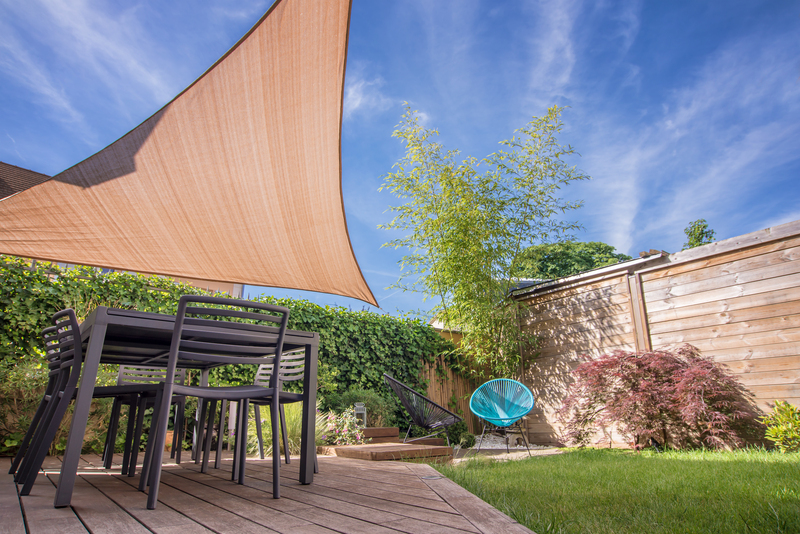Harnessing design to conquer your garden's wind problem
Posted on 18/09/2025
Harnessing Design to Conquer Your Garden's Wind Problem
Is relentless wind wreaking havoc on your garden? Whether you're battling snapped stems, toppled planters, or simply a chilly, uncomfortable environment, persistent gusts can be a serious challenge for even the most dedicated gardener. Fortunately, harnessing clever garden design offers practical, attractive solutions to mitigate wind and create a lush, tranquil retreat. In this comprehensive guide, we'll explore multiple strategies to conquer your garden's wind problem, from selecting plants that act as living windbreaks to incorporating smart hardscape features, all while keeping your garden healthy and beautiful.
Why Wind Is a Garden Problem
Before we discuss solutions, it's crucial to understand the full impact of wind on your garden. High winds can:
- Damage or break plants and trees
- Dry out the soil, leading to water stress
- Increase evaporation, causing plants to wilt
- Spread weed seeds, pests, and diseases
- Make the garden uncomfortable for relaxation or entertaining
Untamed wind can transform even the best-planned garden into a barren, inhospitable space. But with thoughtful design, you can combat these issues and create a thriving outdoor environment.

Site Analysis: Understanding Your Wind Patterns
To effectively conquer your garden's wind problems, begin with an honest assessment of your property. Here's how:
- Observe wind direction: Keep track of the prevailing winds throughout the seasons. Are they strongest from the north, south, east, or west?
- Note wind strength: Are you facing gentle breezes or powerful gusts?
- Identify trouble spots: Which parts of your garden are most exposed? Any natural barriers?
- Check for wind tunnels: Are there gaps between buildings, fences, or trees where wind accelerates?
Mapping these data points will inform a design tailored specifically to your garden's unique wind challenges.
Design Solutions to Harness and Control Garden Wind
1. Strategic Windbreaks: Nature's Solution
One of the most effective ways to manage garden wind is to use windbreaks. These natural or artificial barriers slow wind speed, reduce its impact, and protect your plants.
Types of Windbreaks
- Living Windbreaks: Dense hedges, shrub borders, or rows of trees that filter and diffuse wind.
- Structural Windbreaks: Fences, trellises, pergolas, screens, or walls.
How Windbreaks Work
Effective windbreaks don't completely block wind: they filter it, reducing speed and turbulence. The ideal windbreak is 40-60% permeable, such as a row of staggered shrubs or a slatted fence. Solid barriers, if used, should be paired with nearby plantings to disperse wind gently and avoid creating damaging eddies on the leeward side.
Positioning Your Windbreaks
- Place along the windward edge of your property
- Angle windbreaks to guide wind around, not directly at, key garden areas
- Use multiple, layered windbreaks for best results in exposed sites
2. Choosing the Right Plants for Windy Gardens
Not all plants can withstand wind, but some thrive in blustery conditions. Consider these when designing your borders or windbreaks:
- Grasses: Ornamental grasses sway and bend gracefully in the wind, adding movement without damage. Examples: Molinia caerulea, Miscanthus, Pennisetum.
- Tough Shrubs: Choose dense, flexible species with small, leathery leaves, such as Escallonia, Elaeagnus, Pyracantha, and Berberis.
- Wind-tolerant Trees: Hawthorn, Rowan, Alder, and Blackthorn can form taller screens and habitat for wildlife.
- Evergreens: While evergreen hedges (like yew or holly) provide winter shelter, use them alongside permeable species to avoid wind whip.
Pro tip: Layer taller trees and shrubs with underplanting of tough groundcovers for maximum wind reduction and biodiversity.
3. Smart Hardscaping: Fencing, Walls, and Screens
Hard architectural structures play a vital role in garden wind management design. However, construction and placement are key:
- Opt for permeable designs: Slatted or louvered fences, woven willow screens, or bamboo panels let air pass while breaking the force.
- Vary heights: Stepped or staggered walls/screening helps deflect wind more gradually.
- Combine with planting: Grow climbing plants like honeysuckle, clematis, or ivy on fences and pergolas for visual appeal and extra filtering power.
- Freestanding panels: Use movable panels or trellises to shield patios or vulnerable crops as needed.
Remember: Solid barriers can intensify wind impacts on the leeward side, so combine with shrubs or tall perennials just behind walls/fences.
4. Create Microclimates for Sensitive Plants
Not every part of your garden is equally exposed. Design shelter pockets--microclimates--by:
- Placing seating areas or delicate plants on the sheltered (leeward) side of structures or hedges
- Using water features, boulders, or raised beds as buffers
- Integrating dense plantings to create "green rooms"
With clever zoning, you can grow tender vegetables, herbs, or exotic plants that would otherwise struggle in the wind.
5. Wind-Friendly Layouts and Garden Styles
Some garden layouts naturally resist wind damage:
- Curved paths and beds: Gentle curves soften wind flow, reducing its speed and force compared to straight avenues.
- Sunken gardens: Recessed beds or terraced levels use natural land contours to trap wind and create calm pockets.
- Enclosed courtyards: Create walled or hedged outdoor "rooms" with narrow openings for controlled air movement.
Choose cottage, Mediterranean, or prairie-style plantings--these often feature dense, layered, wind-tolerant vegetation designed to harmonize with windswept landscapes.
Solving Specific Wind Issues in Your Garden
Wind and Vegetable Gardens
- Install windbreak netting or mesh panels around beds for quick protection
- Use cloches and low tunnels for tender seedlings
- Grow root vegetables (carrots, beets) and leafy greens (kale, chard) that cope well with wind
Wind Damage to Lawn and Turf
- Edge lawns with tough grasses or groundcovers to reduce drying out
- Create low mounded borders to divert air flow
- Water deeply but less frequently to encourage deep root growth
Wind and Patio or Entertainment Areas
- Orient patios and decks on the sheltered side of the garden
- Install retractable screens or wind sails for flexible shielding
- Use container plant groupings as movable wind barriers
Top Plants for a Wind-Resistant Garden
Below are excellent plant choices to help you harness garden design solutions for wind:
- Hedges: Fagus sylvatica (beech), Crataegus monogyna (hawthorn), Nerium oleander, Prunus laurocerasus (cherry laurel)
- Tall Shrubs: Escallonia, Olearia, Griselinia littoralis
- Perennials: Eryngium (sea holly), Verbena bonariensis, Kniphofia (red hot poker)
- Ornamental Grasses: Stipa tenuissima, Panicum virgatum, Calamagrostis
- Climbers: Vitis (grapevine), Lonicera (honeysuckle), Clematis montana
Tips for Ongoing Success in a Windy Garden
- Mulch generously to keep soil moist and shield roots from wind-drying
- Water deeply so plants build strong, deep root systems
- Stagger plantings and avoid "block" planting of a single species for better wind diffusion
- Prune regularly to keep shrubs dense and wind-resilient
- Use flexible plant ties and supports for tall or top-heavy species

Design Inspiration: Real-World Wind-Resistant Gardens
Coastal gardens provide some of the best examples of successful wind-defeating design. On windswept shorelines, layered plantings of tamarisk, sea buckthorn, and hardy grasses create shelter for inner courtyards and vegetable plots. In urban settings, architects use steel-mesh fencing softened with climbing roses or trained fruit trees for privacy and wind buffering. Even on rural farms, hedge rows of hawthorn, alder, and willow offer protection for orchards and livestock.
Take inspiration from these techniques and adapt them to your space with a mix of living windbreaks, permeable structures, and climate-adapted plants.
Conclusion: Transform Wind from Enemy to Ally with Smart Garden Design
You don't need to let relentless wind dictate your garden's story. With intentional design--by positioning windbreaks, choosing resilient plants, and laying out your garden for shelter--you can conquer your garden's wind problem and unlock new potential for growth, relaxation, and beauty.
The process begins with observation, planning, and a willingness to experiment. Start small, combining short-term solutions (like screens or netting) with long-term improvements (fencing, hedges, and strategic planting). Over time, you'll enjoy a calmer, greener, and more rewarding outdoor sanctuary.
Ready to take action? Assess your windy garden, try out some of the ideas above, and watch your outside space flourish despite the breeze!
Frequently Asked Questions on Wind and Garden Design
- What is the best windbreak plant? - Hawthorn and hornbeam are among the best, but your choice should match your climate and soil.
- How high should my windbreak be? - Ideally, it should be high enough to protect key areas behind it (5-8 feet for a domestic garden), but even a low barrier reduces wind speed substantially.
- Can raised beds help in windy gardens? - Yes, they improve drainage and allow you to group wind-tolerant plants together for shelter.
- Can I grow vegetables in a windy spot? - Absolutely--just provide shelter, use tough varieties, and mulch well.
For further garden design inspiration and practical tips, explore more resources or consult a garden designer specializing in windy landscapes.

